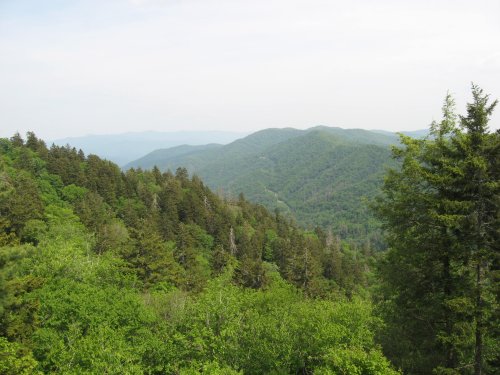A post on this very important topic appeared on the Agricultural Biodiversity Weblog a few days ago while I was away. There are few more important issues impacting biodiversity than this one, and not just plants but animals too.
Almost too long ago to be remembered was the Irish Potato Famine. In this case it was a potato disease we now call late blight. The problem was the emergence of a new fungal disease combined with a food supply nearly completely dependent on a single crop. After the famine, the solution that emerged seemed too simple, a fungicide. Does this mean now potatoes can be sprayed with a chemical and we don’t have to worry about the disease anymore?
Not quite. The fungicides used to combat late blight are not only very toxic and expensive, but they can only be used to prevent and not cure late blight. That means when conditions are ripe for an outbreak, farmers must spray their crops every few days (more often if it rains) and they normally need to continue applying chemicals all the way until harvest.
Late blight is a quickly mutating disease, and every few years new chemicals need to be developed to control the disease, because the old ones stop working. These chemicals generally need to be made stronger and more toxic.
Until recently this disease reproduced asexually, which was very important because this limited it’s ability to mutate. In the last few years two distinct strains of the disease have met and begun sexual reproduction.
Now, about 150 years after the Irish Potato Famine, we are facing an unprecedented outbreak of similar fungal diseases in a wide variety of plants and animals. Blight, rust and smut diseases are now present in a wide variety of crops, and animals like frogs are being killed by fungal diseases in large numbers all over the world. The world’s food system is almost entirely dependent on two crops, corn and soy. These two crops are what feeds nearly all farm animals, and is the basis of nearly all processed foods. Corn in particular is becoming infected with fungal smut diseases.
The chemical companies aren’t worried, because for them it’s good business. They are confident they will continue to be able to manufacture more and newer chemicals as needed. Seed companies too can often develop resistant varieties, in the nick of time. The expense of these seeds and chemicals are often heavily subsided by governments, so the true cost is rarely passed on to consumers.
Any remaining costs that aren’t covered by subsidies are pushed back to farmers, who are rarely in a position to easily afford them. Farmers are usually powerless to approach the situation in a constructive way with biodiversity or practicing good crop rotation, because these options are commercially inviable or even illegal in some cases.
In recent years the responsibility for preserving our heritage varieties of plants has been transfered to commercial interests, who are reluctant to pay for preserving varieties vulnerable to these diseases.
Politicians are only too happy to accept short term solutions, because as long as they can finish their term in office without it becoming a serious problem, that’s all that matters to them.
We are quickly heading toward a very serious situation. Almost anyone who has been gardening for more than a few years will tell you these plant diseases have been getting much more of a problem. We really need to find ways to address the environmental causes for these diseases, and make politicians and others more aware of these problems so that action will be taken. If we aren’t there already, we will soon reach the point of no return.


